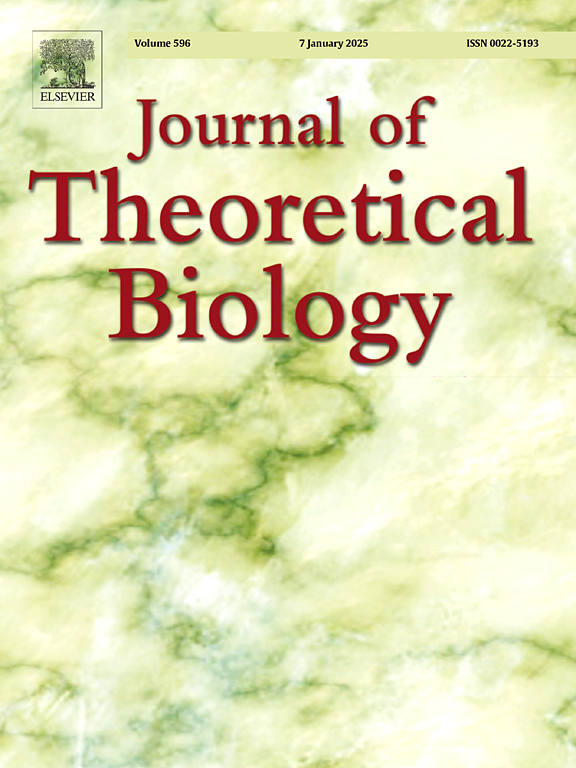利用细胞壁尖端生长的双配置模型从细胞形状推断胞吐特征。
IF 1.9
4区 数学
Q2 BIOLOGY
引用次数: 0
摘要
丝状细胞的尖端生长,如根毛、苔藓原丝和真菌菌丝,依赖于由胀压、壁力学和胞吐作用驱动的协调的细胞壁伸展。我们引入了一个双重配置模型,其中包括膨胀和非膨胀状态,以描述细胞壁的生长为弹性变形和不可逆延伸的综合效应。该框架直接从细胞形态和弹性拉伸中推断出胞吐剖面,并将其表述为基于自相似条件的初值问题。将该模型应用于苜蓿根毛、苔藓壶状菌原胞体和菌丝样形状,我们发现,在锥形细胞中,胞吐在尖端达到峰值,而在扁尖细胞中,胞吐在超过阈值后向远离尖端的环状区域转移。该模型推广了以前的流体模型,并提供了胞吐分布和细胞形状之间的机制联系,解释了在不同物种中观察到的尖端生长细胞的差异。本文章由计算机程序翻译,如有差异,请以英文原文为准。
Inferring exocytosis profiles from cell shapes using a dual-configuration model of walled cell tip growth
Tip growth in filamentous cells, such as root hairs, moss protonemata, and fungal hyphae, depends on coordinated cell wall extension driven by turgor pressure, wall mechanics, and exocytosis. We introduce a dual-configuration model that incorporates both turgid and unturgid states to describe cell wall growth as the combined effect of elastic deformation and irreversible extension. This framework infers exocytosis profiles directly from cell morphology and elastic stretches, formulated as an initial value problem based on the self-similarity condition. Applying the model to Medicago truncatula root hairs, moss Physcomitrium patens protonemata, and hyphoid-like shapes, we find that exocytosis peaks at the tip in tapered cells but shifts to an annular region away from the apex in flatter-tip cells beyond a threshold. The model generalizes previous fluid models and provides a mechanistic link between exocytosis distribution and cell shape, explaining observed variations in tip-growing cells across species.
求助全文
通过发布文献求助,成功后即可免费获取论文全文。
去求助
来源期刊
CiteScore
4.20
自引率
5.00%
发文量
218
审稿时长
51 days
期刊介绍:
The Journal of Theoretical Biology is the leading forum for theoretical perspectives that give insight into biological processes. It covers a very wide range of topics and is of interest to biologists in many areas of research, including:
• Brain and Neuroscience
• Cancer Growth and Treatment
• Cell Biology
• Developmental Biology
• Ecology
• Evolution
• Immunology,
• Infectious and non-infectious Diseases,
• Mathematical, Computational, Biophysical and Statistical Modeling
• Microbiology, Molecular Biology, and Biochemistry
• Networks and Complex Systems
• Physiology
• Pharmacodynamics
• Animal Behavior and Game Theory
Acceptable papers are those that bear significant importance on the biology per se being presented, and not on the mathematical analysis. Papers that include some data or experimental material bearing on theory will be considered, including those that contain comparative study, statistical data analysis, mathematical proof, computer simulations, experiments, field observations, or even philosophical arguments, which are all methods to support or reject theoretical ideas. However, there should be a concerted effort to make papers intelligible to biologists in the chosen field.

 求助内容:
求助内容: 应助结果提醒方式:
应助结果提醒方式:


